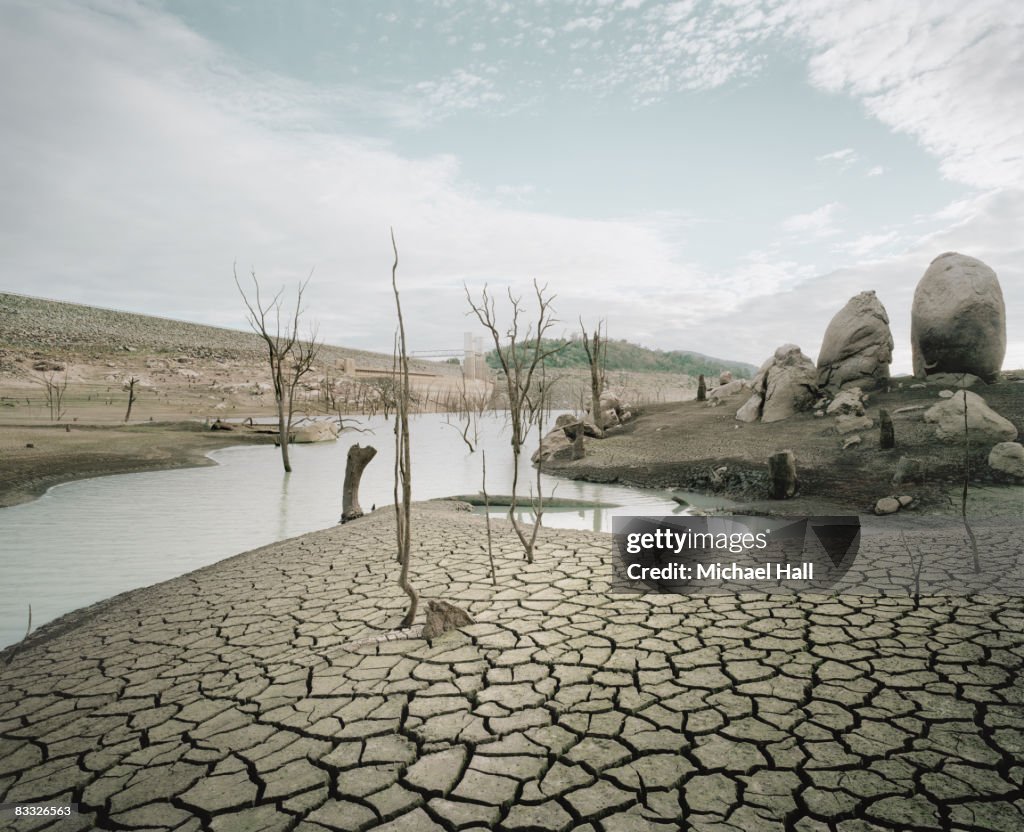
Human Activity stands as the most pressing environmental challenge facing humanity. While Earth’s climate has naturally shifted over millions of years, the changes observed in the past few centuries have been driven primarily by human activity. Practices such as burning coal, oil, and natural gas increase the amount of greenhouse gases—especially carbon dioxide—in the atmosphere, trapping more of the sun’s heat and driving up global temperatures. Although carbon dioxide is the main greenhouse gas fueling climate change, others such as methane, hydrofluorocarbons, and similar compounds also contribute to the planet’s warming.
The impacts of Human Activity are evident across the globe in every aspect of life. It is transforming ecosystems and altering weather patterns, leading to stronger hurricanes, more severe wildfires, prolonged droughts, and the potential for an ice-free Arctic. Climate change also threatens human health, can weaken economies, undermines national security, and is already influencing every sector of society—and will continue to do so.
Since 1880, the Earth’s average surface temperature has risen by roughly 2°F (1.1°C), with about two-thirds of that warming occurring after 1975.
Atmospheric carbon dioxide concentrations are now higher than at any time in the past 800,000 years.
In 2020, the burning of fossil fuels produced 92% of the United States’ human-generated carbon dioxide emissions.
Ironically, many nations that have contributed the least to global carbon emissions will bear some of the harshest impacts of Human Activity.
Addressing Human Activity is an urgent priority. Improving energy efficiency and expanding renewable energy remain the quickest, safest, cleanest, and most cost-effective ways to reduce fossil fuel use and prevent the most damaging effects. Nature-based approaches—such as protecting ecosystems and implementing climate-smart farming techniques—help preserve biodiversity and natural systems while also capturing carbon dioxide. Additionally, technologies like direct air capture and methods to collect, utilize, and store emissions from industrial operations will be essential for reducing the carbon dioxide already present in the atmosphere.
Read more about the Importance of AI
Read more about Climate Conditions
Certain gases—such as carbon dioxide and methane—occur naturally in the atmosphere and play a role in warming the Earth’s surface by retaining heat from the sun. This phenomenon, called the greenhouse effect, is beneficial when greenhouse gas levels remain balanced, as it helps maintain temperatures suitable for life and minimizes extreme temperature variations.
Human activities, especially the burning of fossil fuels, release large amounts of greenhouse gases like carbon dioxide, methane, and nitrous oxide. In 2021, atmospheric carbon dioxide reached 417 parts per million (ppm)—a level higher than at any point in the past 800,000 years. Before the Industrial Revolution in North America and Europe, beginning around 1760, the average concentration was roughly 280 ppm. The pace of carbon dioxide accumulation has also been increasing: in the 1960s, it rose by about 0.6 ppm annually, but during the 2010s, the growth rate climbed to 2.4 ppm each year.
There is widespread scientific consensus that Human Activity—particularly the combustion of fossil fuels for energy—have caused a swift rise in greenhouse gases in the atmosphere. More than 97 percent of scientists who actively publish research agree on this point and have documented it extensively in peer-reviewed journals.
In a 2021 assessment on the physical science basis of climate change, the Intergovernmental Panel on Climate Change (IPCC)—a United Nations body that delivers scientific insights on the climate crisis—stated: “There is no doubt that human activity has warmed the atmosphere, ocean, and land. Significant and rapid transformations have taken place in the atmosphere, ocean, frozen regions, and ecosystems.”
The Intergovernmental Panel on Climate Change (IPCC) is the foremost global body dedicated to examining climate change, functioning under the auspices of the United Nations. Founded in 1988, the IPCC consists of 195 member nations, all of which take part in reviewing its publications and approving its conclusions. While the IPCC maintains a neutral stance on policy, it provides scientific insights without recommending specific actions. The organization does not carry out original research itself; rather, it draws on the expertise of over 1,000 specialists who evaluate and synthesize findings from thousands of peer-reviewed studies conducted around the world across various scientific fields. Approximately every five to seven years, the IPCC releases a comprehensive report compiling the most recent scientific knowledge on global climate change. Additionally, it periodically issues special reports on important topics, such as the potential effects of a 1.5°C temperature increase and the projected changes to oceans and ice-covered regions.
The initial installment of the IPCC’s Sixth Assessment Report, focused on the physical science basis of climate change, was published in 2021. The second section—detailing risks to ecological and human systems and possible adaptation strategies—and the third section—exploring approaches to curb or prevent greenhouse gas emissions—were both released in 2022. These three components will be integrated into a single Synthesis Report, including a Summary for Policymakers, slated for publication in March 2023.
By examining air bubbles preserved in ice cores, researchers can determine atmospheric carbon dioxide levels dating back 800,000 years. Their findings show that CO₂ levels began rising at an exponential pace in the mid-20th century, reaching concentrations higher than at any point in that entire period. The speed at which CO₂ is being added to the atmosphere is still climbing. In the 1960s, the yearly increase was around 0.6 parts per million (ppm), but by the 2010s, it had grown to 2.3 ppm per year.
Alongside this rise in CO₂, global temperatures have also gone up. Since 1880, the planet’s average surface temperature has warmed by roughly 2 degrees Fahrenheit (1.1 degrees Celsius).
Under the Global Change Research Act of 1990 (P.L. 101-606), the U.S. government is required to carry out a comprehensive evaluation of the domestic impacts of climate change. To meet this obligation, the U.S. Global Change Research Program (USGCRP) was created in 1989 and tasked with producing a National Climate Assessment (NCA) every four years. The USGCRP works with 13 federal agencies that support climate research to prepare the NCA.
The Fourth NCA, issued in two volumes in 2017 and 2018, analyzes climate patterns across 10 regions of the nation: the Northwest, Midwest, Northeast, Southwest, Northern Great Plains, Southern Great Plains, Southeast, U.S. Caribbean, Alaska, and Hawaii along with U.S.-affiliated Pacific Islands. It addresses a wide array of climate-related topics, including energy supply projections, consequences of sea-level rise, and urban adaptation strategies. The assessment also evaluates how climate change influences economic performance, public health, Indigenous communities, and national infrastructure. Over 300 experts from government, academia, nonprofit organizations, and the private sector contributed to the report. Work on the Fifth NCA is in progress and scheduled for release in 2023.
Climate change is a worldwide crisis. The consequences of increasing global temperatures, melting glaciers, rising oceans, stronger storms, prolonged droughts, more severe wildfires, and other related impacts will be felt everywhere—though not all nations will face them at the same time or with equal severity.
Its effects are already devastating communities across the globe: deadly heatwaves in Japan, massive wildfires in California, destructive typhoons in India, and extreme droughts in Europe. Without a sharp reduction in fossil fuel use—which releases more carbon dioxide and accelerates warming—such disasters will only become more frequent and intense.
Climate change is also driving large-scale human displacement. Each year, around 20 million people are forced to relocate due to climate-related hazards, and this figure is expected to keep increasing.
As carbon dioxide concentrations in the atmosphere grow, the oceans absorb more of it, leading to acidification. This change in seawater chemistry makes it harder for marine organisms like corals and shellfish to form their skeletons or shells, disrupting entire marine ecosystems and ultimately affecting seafood supplies for people.
In short, climate change is influencing every part of life on Earth—for humans and all other species. It is a critical threat that demands united global action.
We can enhance the energy efficiency of our buildings, transportation systems, and energy production sector. We can shift toward clean, renewable energy sources that do not contribute additional greenhouse gases to the atmosphere. Furthermore, sustainable land management practices that safeguard forests and soils can help store carbon and protect ecosystems. Expanding the use of renewable energy and energy-efficient technologies will yield not only environmental advantages but also new employment opportunities and economic development.
Alongside the shift to renewable energy, protecting ecosystems and adopting nature-based strategies—such as preserving wetlands, creating living shorelines, and practicing climate-smart agriculture—can lower greenhouse gas emissions and help reduce the impacts of climate change.
Nonetheless, some degree of warming is unavoidable due to past and present emissions. Employing carbon removal methods, including direct air capture, will be essential to eliminate existing carbon dioxide from the atmosphere and avert the most severe consequences of climate change. In short, rapid implementation of all these solutions will be vital to confronting this global challenge.
The climate is undergoing changes and will keep evolving in the coming years. Both observed data and scientific calculations show a clear connection to human-generated greenhouse gas emissions. These shifts in climate appear in long-term trends like increasing average temperatures and rising sea levels, as well as in altered climate variability—meaning more intense short-term fluctuations and a higher occurrence of extreme weather events such as intense rainfall, prolonged droughts, or exceptionally hot summers.





